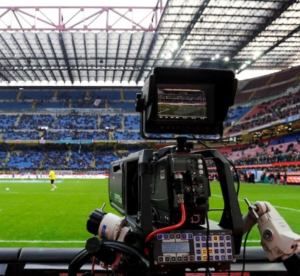Technology in sports is a technical means by which athletes attempt to improve their training and competitive surroundings in order to enhance their overall athletic performance. Thanks to innovative composite materials used in sports equipment that is strong, durable, and lightweight for example like those found in sport’s shoes and other protective gear like cycling and skiing helmets. Creativity and Innovation are the main elements in the world of sports.
A sports shoe may be protected by several IP rights: Designs protect the “look” of the shoe; Trademarks distinguish the shoe from similar products and protect the “reputation” of the shoe (and the company making it); Copyright protects any “artwork” and audiovisual creations used to publicize the shoe and Patents protect the “technology” used to develop the shoe.

With the introduction of Sports Technology such as Sensors, Wearable Tech, VAR(video assistant referee), Reflexion, Protective Equipment, Timing Systems, ABS, Virtual Reality etc., the athletic world has emerged enormously
How sport and tech work together to augment fan experience
Millions of dollars are invested to ensure that fans have access to a wide range of both physical and digital experiences. Virtual reality (VR) and augmented reality (AR)

refine player performance and offer fans a more intense, viewing experience. These technologies bring fans to the sports field without having to leave the comfort of their home. Sports venues provide high-quality Wi-Fi networks to ensure that spectators can connect with friends and mobile apps offer a variety of services which include anything from locating a parking spot to ordering meals, upgrading seats at a sporting event, and high-definition action replays and close-ups.
Trademarks and branding
Trademarks distinguish a company and its products from those of its competitors. The goodwill associated with a successful trademark or brand can be a huge asset. Trademarks help the company to build a reputation in the market and trust in the goods and services it provides. Showcasing of trademarks at reputable sport events, surges sales by alluring the emotions of sports fans. Trademarks can be adopted as a lifestyle.
Sporting celebrities can register themselves as trademarks, not only their own name but also nicknames, poses, slogans, signatures, or other insignia for which they well known. Usain Bolt’s “Lightening Bolt” pose and his “to di world” slogan are registered trademarks.
Copyright and broadcasting

Sports organizations rely on broadcasters for live streaming of their events. Copyright laws, particularly those connected to broadcasting organizations, form a basis for the relationship between sport and television and other media. Broadcasting organizations negotiate with sports governing bodies in order to show that company’s products on television or radio, either live, delayed or highlights. Broadcasting & Media Rights is basically the media rights to an intellectual property object sold to a particular broadcasting company.
Role of Patent in Sports
Thanks to cutting-edge innovations, which are frequently patented, sports are progressing to new heights. In the world of sports, the design helps to the distinctive identification of sporting events, teams, and their equipment in the fiercely competitive sports market. The design has a crucial role in enhancing the commercial worth of a product or sporting event, making it more appealing to consumers and increasing its marketability. We are all willing to spend a bit more on a design that is unique and that expresses our personality and way of life. By securing industrial design rights or design patents, businesses safeguard the investment they make in creating innovative, appealing designs.
You would know that Sri Lanka was the cricket world champion after the 2014 T20 World Cup. This edition included a lot of thrilling matches with tense results. You might wonder, why are we talking about it here? The truth is that the 2014 T20 World Cup was extremely memorable for both ardent cricket fans and tech enthusiasts. Viewers would have observed that these World Cup matches featured a special kind of stump and bail. These stumps would light up when they contacted a ball or when a fielder moved them. Although this is visually appealing to viewers, the umpires were the real winners. Zing International, a South Australian firm, developed the illumination technology for stumps and bails. Australian mechanical designer Bronte Eckermann is the creator of Zing International. A patent application titled “System for indicating movement of an article from one position or orientation to another” (WO 2011044642 A1) was submitted by Mr. Eckermann to secure this innovation. This was a breakthrough technology in cricket that was well secured with Patent rights.
To summarize the above, it is important to note that safeguarding Intellectual Property is crucial in the world of sports. Protecting the creativity by Copyright and Patenting the product/ process of innovative companies in the sports field can create new opportunities for monopolisation and revenue generation for them. This in turn boosts the performance of the Athletes using such IP protected products/ innovations. It’s surely a win-win for both Athletes as well as brands/companies if sports law is strategically used.



